The French Dispatch review: Wes Anderson proves yet again why he is the master of visual storytelling
The French Dispatch is Anderson’s idea of painting a picture beyond the outlines of a canvas
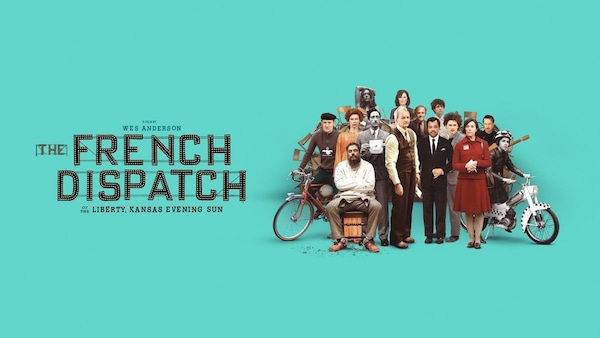
Last Updated: 12.31 AM, Mar 28, 2022
Story:
Set in the fictional town Ennui-sur-Blasé, also known as just Ennui, in the 60s and it revolves around the eponymous magazine from Kansas USA, based out of Ennui, France. After its editor in chief and owner Arthur Howitzer Jr. (Bill Murray) passes away from a heart attack, The French Dispatch and its writers decide to publish their final issue with four features and obituary as per the wishes of Howitzer Jr.. The narrative details the four features like an anthology told from the perspective of the journalists who wrote them.
Review:
Wes Anderson, when promoting the film, said it is a “love letter to journalists”, and rightly so. The film is a throwback to feature magazines telling human interest features from the local community. In fact, for The French Dispatch, Anderson has taken real-life inspiration from the American magazine, The New Yorker, its former editor-in-chief, Harold Ross, and other real-life journalists from The New Yorker.
The first story of the anthology is a brief introduction to the city of Ennui by Owen Wilson’s character, Herbsaint Sazerac. This is the shortest story among the four and it features Owen Wilson as a bicycle journalist narrating his stories as he travels across the city in his bicycle. Wilson’s Sazerac breaks the fourth wall and addresses the audience while looking straight into the camera. This is Anderson’s unique way of introducing the film through a prologue, like a chapter in a book, and the unmistakable visual identity of Anderson’s shots are evident from the very first scene.
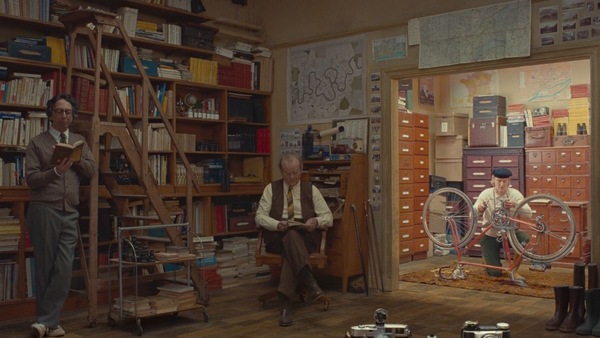
The second story is in fact the first main feature, and it focuses on Benicio Del Toro’s Moses Rosenthaler, a convicted killer who is also a genius artist. Adrien Brody plays the role of an art collector who becomes interested in Rosenthaler’s art that was created within the prison walls. The story delves into Rosenthaler’s trauma and pain, as well as his inspiration and muse, who is none other than his prison guard, Simone (Léa Seydoux). Tilda Swinton plays the role of a journalist, J.K.L. Berensen, who presents Rosenthaler’s story at a ceremony. The story is a satire on consumerism, existentialism, and corruption.
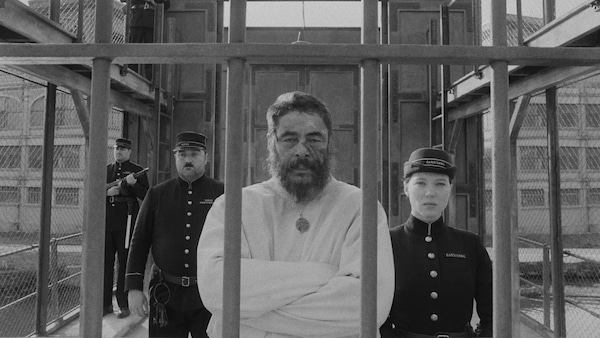
The third story features Frances McDormand who plays the role of Lucinda Krementz, a journalist covering the student protests in 60s France. This is in fact inspired by true events from 1968 when far-left students protested against consumerism, capitalism, and American imperialism. Timothée Chalamet essays a character called Zeffirelli, a student leading the protest. Lyna Khoudri plays another student leading the protest whose ideologies vary ever so slightly from Zeffirelli’s. The narrative toys with the idea of the young being free-willed and ready to fight for their rights and liberty.
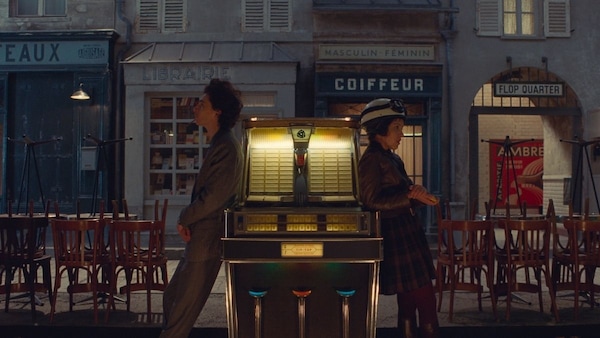
The final story features Jeffrey Wright as Roebuck Wright, who narrates a story about the final feature he worked on for The French Dispatch. His feature was about a legendary chef named Nescaffier, played by Steve Park. What was initially intended as a fluff piece about food and cuisine ended up being a compelling feature on discrimination, immigration and homophobia, and the central story of the feature is about a kidnapping.
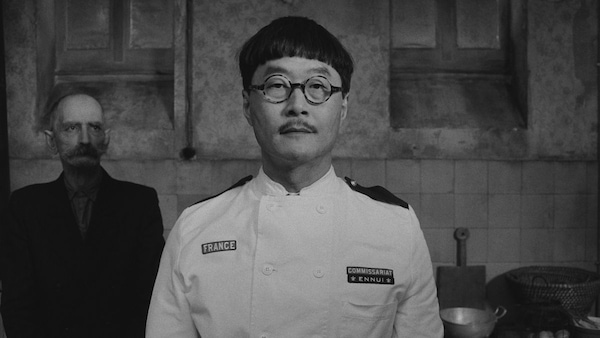
All of these stories follow Anderson’s signature style of symmetry, negative space, vibrant colour palettes, and zoomed out shots. Each frame and the soundtrack that accompanies it captures the essence of the story and it is prevalent throughout the runtime. These frames give the audience the feeling of witnessing moving pictures within a painting. In fact, his frames are the subject matter and the characters are mere story-telling devices used to accentuate them.
Anderson has also used the 4:3 aspect ratio for the vast majority of his shots. This was recently seen in Zack Snyder’s Justice League. While Snyder used this aspect ratio in order to fit his godlike beings into one frame, Anderson has used it to capture the finer details of a particular scene. He has also incorporated deadpan humour whilst also discussing topics relating to serious subject matter.
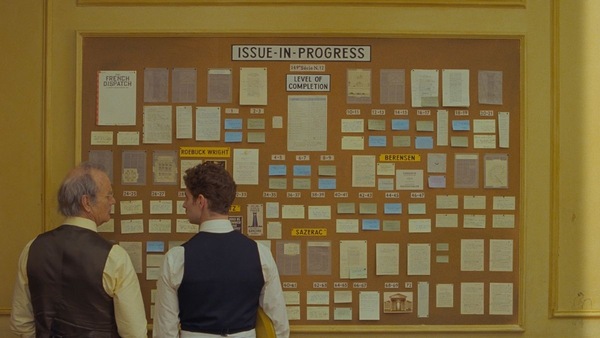
Verdict:
The film might not be his magnum opus but it is most certainly one of his more ambitious projects. The excellent ensemble essays their roles to perfection, adding nuance and depth to the film.
WHERE
TO WATCH
- see all
Subscribe to our newsletter for top content, delivered fast.

